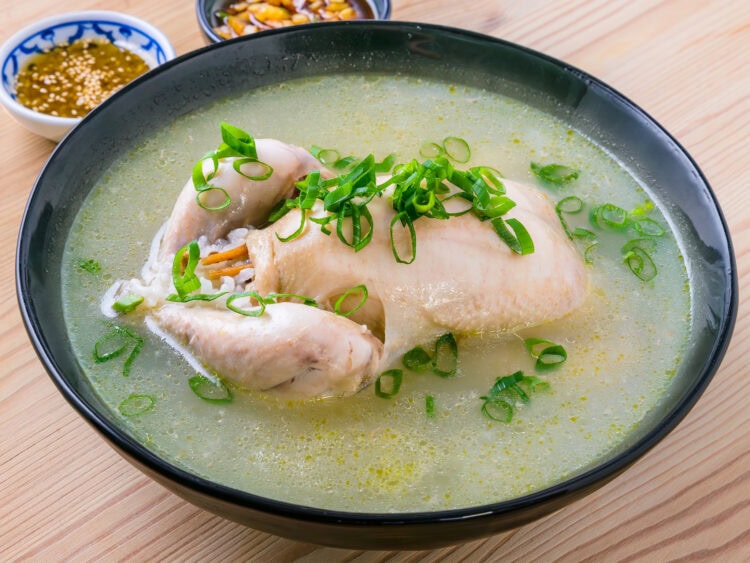The recipe for the famous Korean Ginseng broth that will give you energy in both winter and summer!
Is it an Asian broth? A dish like Chinese hot pot? A rice porridge? Samgyetang is all of these things, but at the same time, it’s not. “Thanks Marc, I’m much clearer on my understanding of the recipe now” ➡️ Don’t pretend you’re not going to hit the “Go to Recipe” button in the next 5 seconds.
More seriously, it’s a classic of Korean cuisine that, like kimchi jjigae, deserves to be much better known.
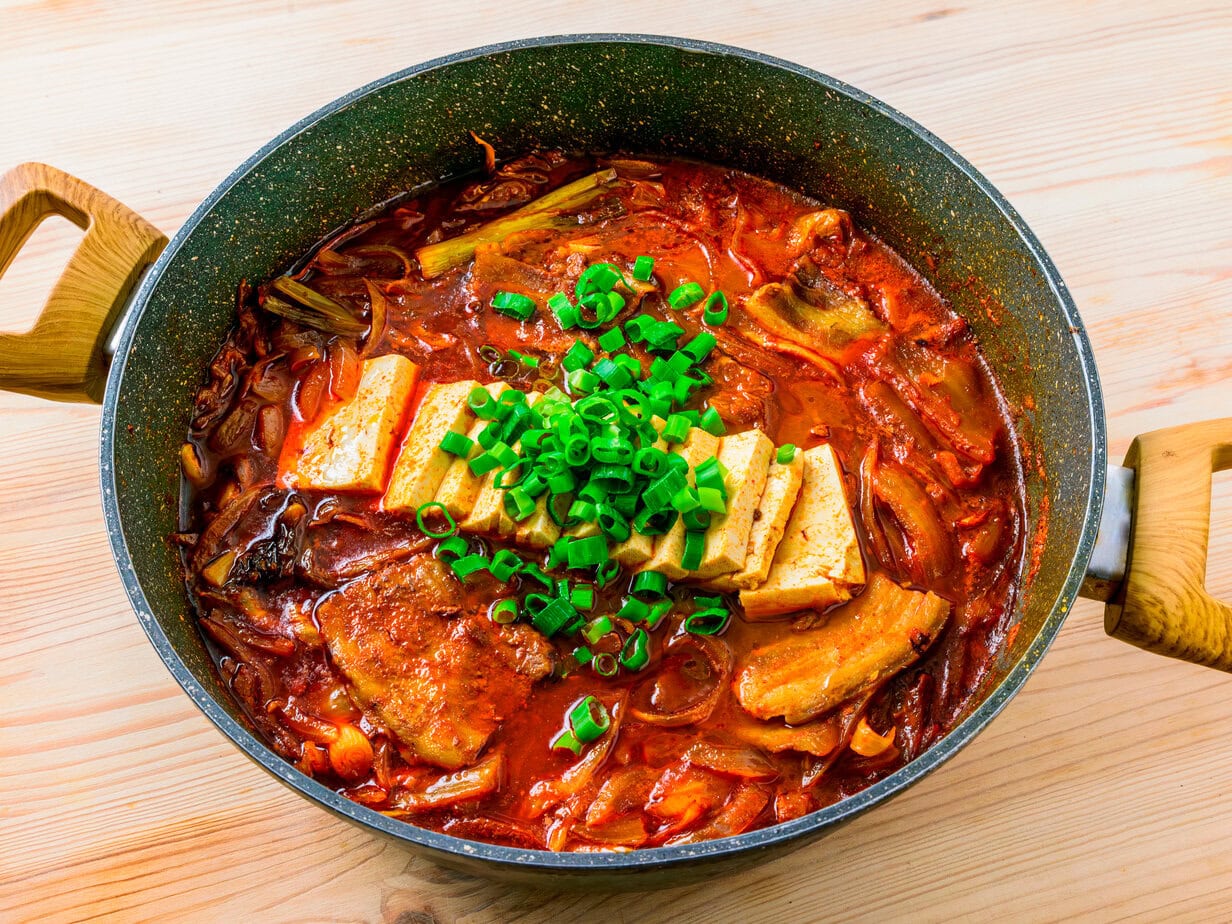
What is Samgyetang?
Generally, looking at the etymology of a dish like this is the best way to properly define it. Samgyetang (삼계탕) derives its name from three elements: Sam
(삼) for ginseng (insam 인삼), gye
(계) which means chicken, and tang
(탕) which means soup.
It’s very popular in Korea, being part of Boyangsik (보양식), the name for foods known to strengthen and revitalize the body. Samgyetang, in particular, is renowned for helping combat fatigue, stabilizing blood pressure, strengthening the immune system, and providing many other benefits.
Purists insist that to be “authentic”, this dish must contain these 3 elements (soup, ginseng, chicken) and I’ll add a small detail: the soup contains glutinous rice, which during cooking will produce an effect similar to, but not quite, a rice porridge. This is ultimately why, in my opinion, we make the distinction between broth and soup here because the final texture will be quite different due to the disintegrated rice that will thicken the flavored liquid.
Beyond these basic elements, some ingredients like jujube (Chinese date) are found more often, but there’s no strict rule, and in Korea, you’ll find thousands of variations, sometimes greatly departing from the typical appearance of the dish. Chefs will maximize culinary research and complexity in one or another of the components (most often, the broth with Dashi, miso, …)
When to Eat Samgyetang in Korea?
In Korea, even though Samgyetang is a hot soup, it’s very popular in summer. Koreans often say: “You fight heat with heat!”
They assume that in summer, blood circulates more near the skin, but less around internal organs, which cools them and can lead to a decrease in “appetite and” energy. Eating a hot dish like Samgyetang, rich in nutritious ingredients, would help restart blood circulation to the organs and regain “appetite and” energy.
Additionally, it helps lower body temperature by inducing sweating. That’s why Koreans love to eat Samgyetang during “sambok”, the three hottest days of the year.
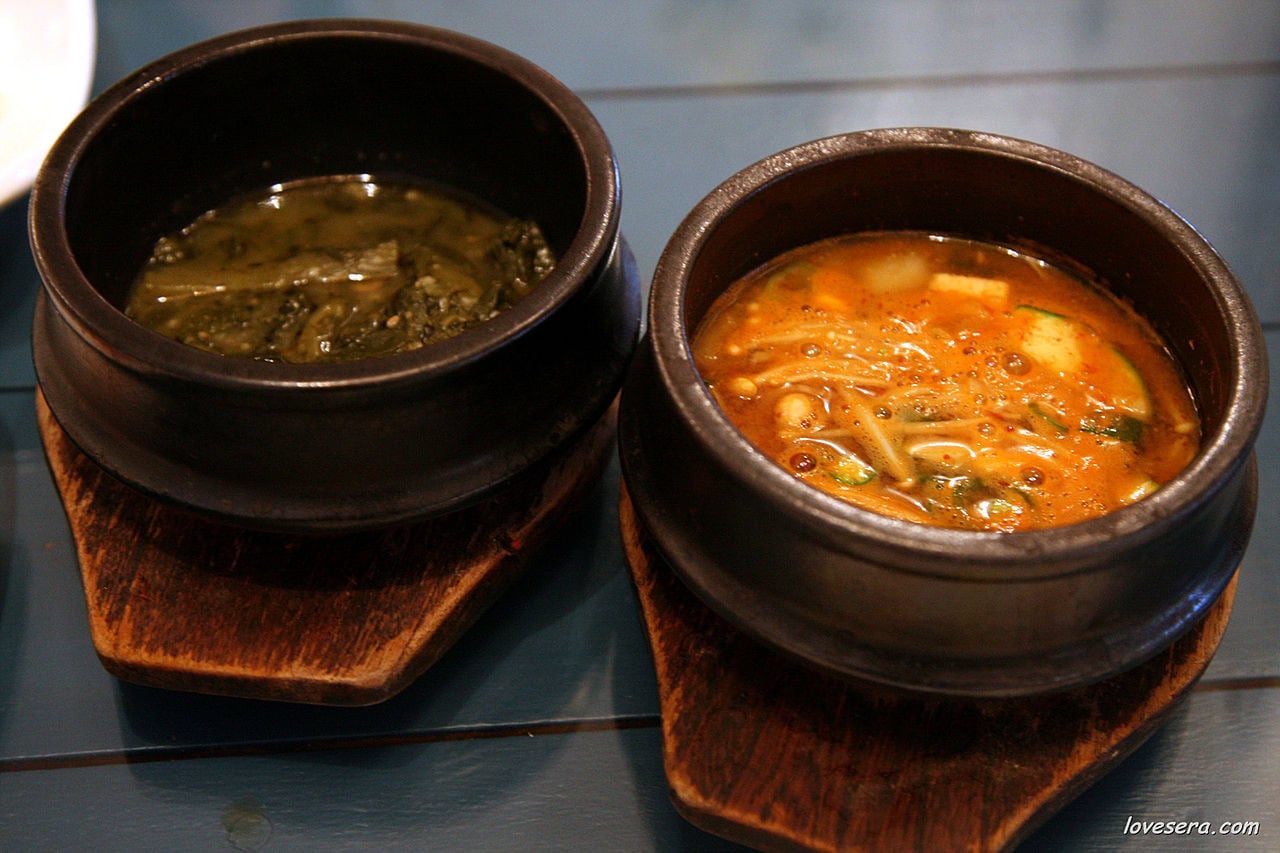
During this period, Samgyetang restaurants are often packed with people seeking a bowl of this comforting soup. It will generally be served in a ttukbaegi (뚝배기), which is an earthenware pot used for Korean dishes like jjigae and gukbap, which retains heat and allows dishes to be served piping hot. It’s a type of onggi (옹기), traditional Korean pottery used for tableware and storage.
How to Serve Homemade Samgyetang?
Generally, it will be served in individual bowls accompanied by banchan such as japchae, mung bean salad, sesame spinach, kimchi, … with dipping sauces on the side
The Main Ingredients of Samgyetang
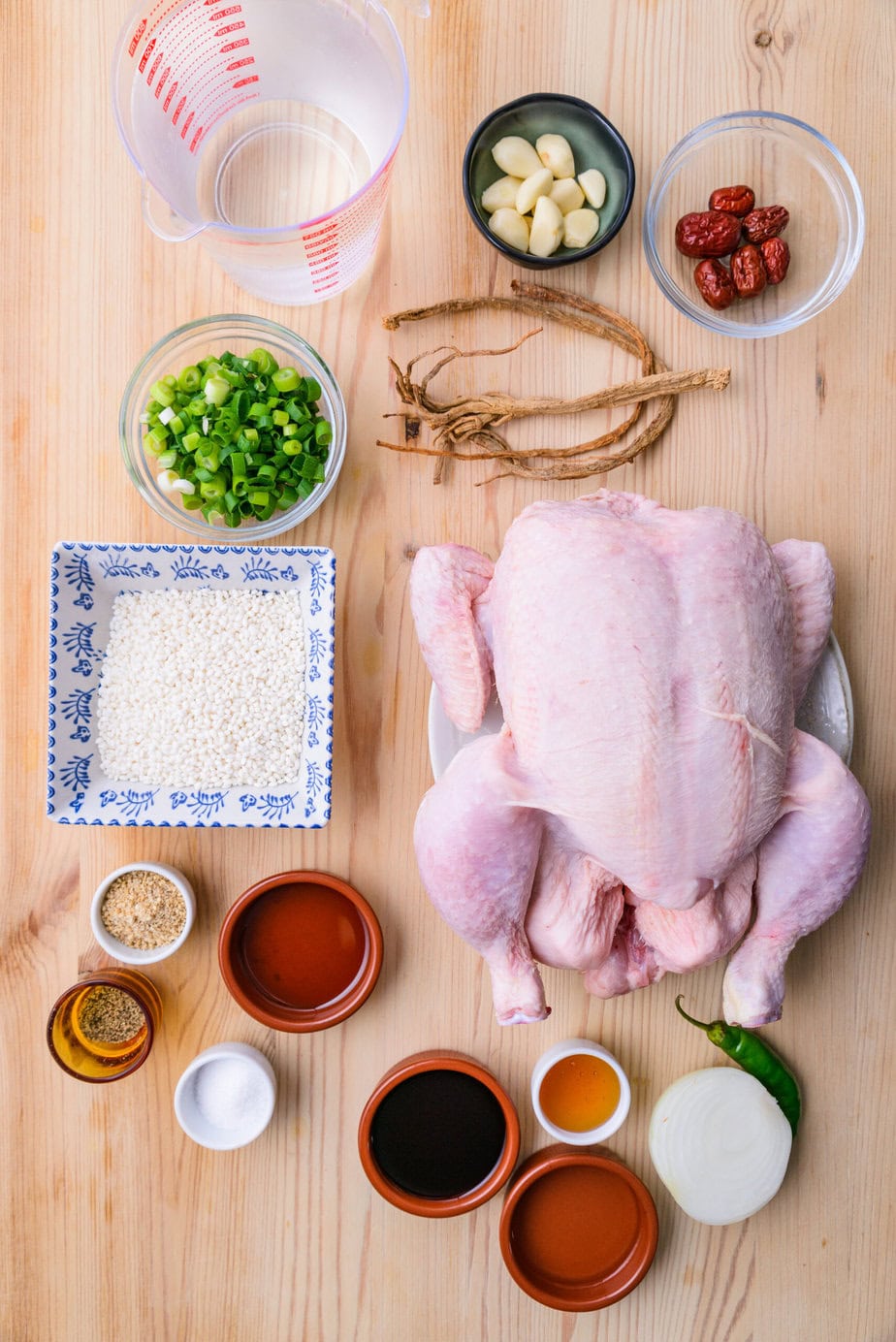
The chicken: I specify that it should be small because we cook it whole, but depending on the size of your pot, choose one that fits. It’s not too important except for aesthetic or practical reasons
The jujubes: famous Chinese dates, they are easily found dried in Asian supermarkets. They bring both flavor and benefits according to traditional Korean and Chinese medicine, but they are not essential for the success of the dish
Glutinous rice: Here, ideally you should use short-grain glutinous rice. But I’ve also tested the recipe with sushi rice and it worked very well
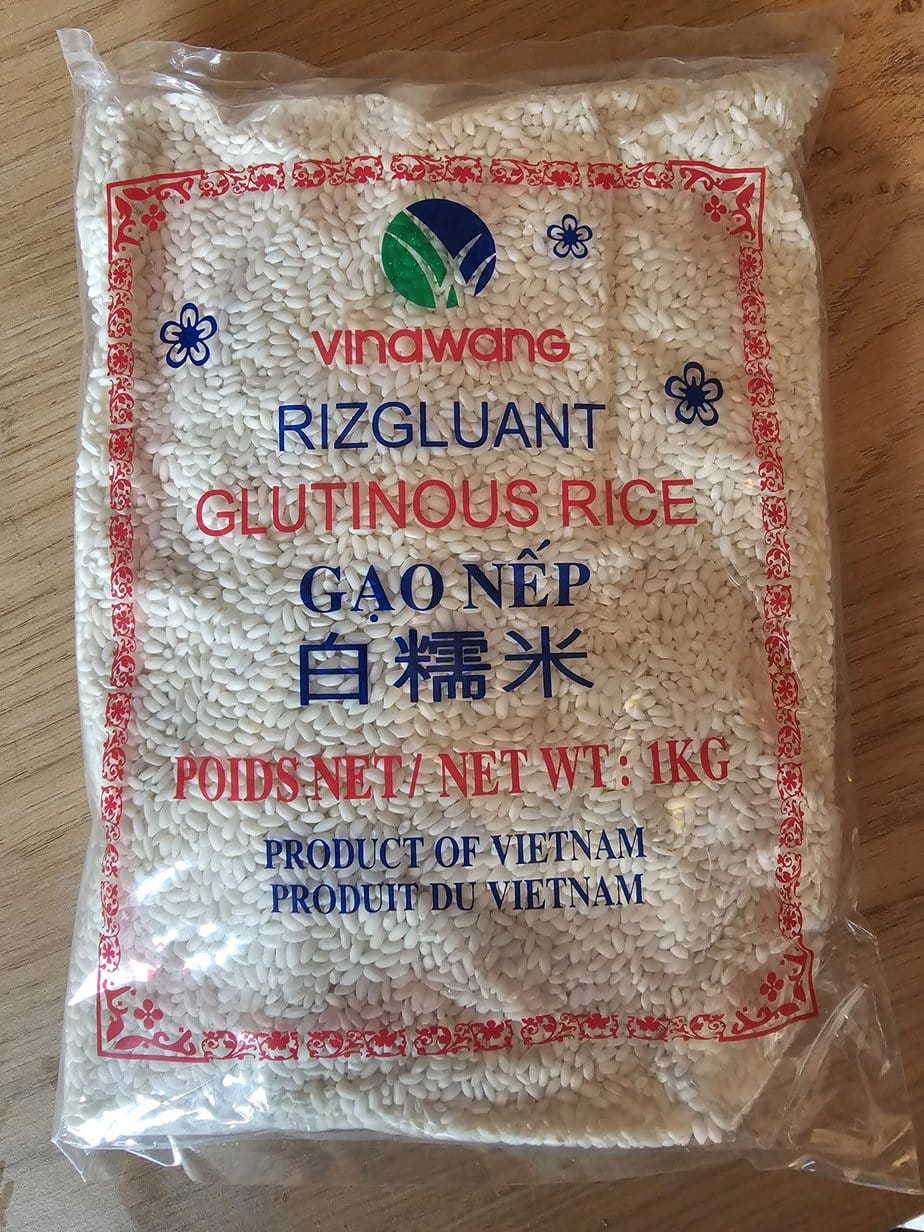
Ginseng: This root is the star of the dish! Preferably fresh but dried works very well too, it brings an inimitable taste to the soup
The light soy sauce: essential to bring umami to the dipping sauce
Rice vinegar: like soy sauce, we’ll use it to create a delicious sweet and sour dipping sauce
Sesame oil: here, you need toasted sesame oil. Its stronger flavor is essential for an authentic taste
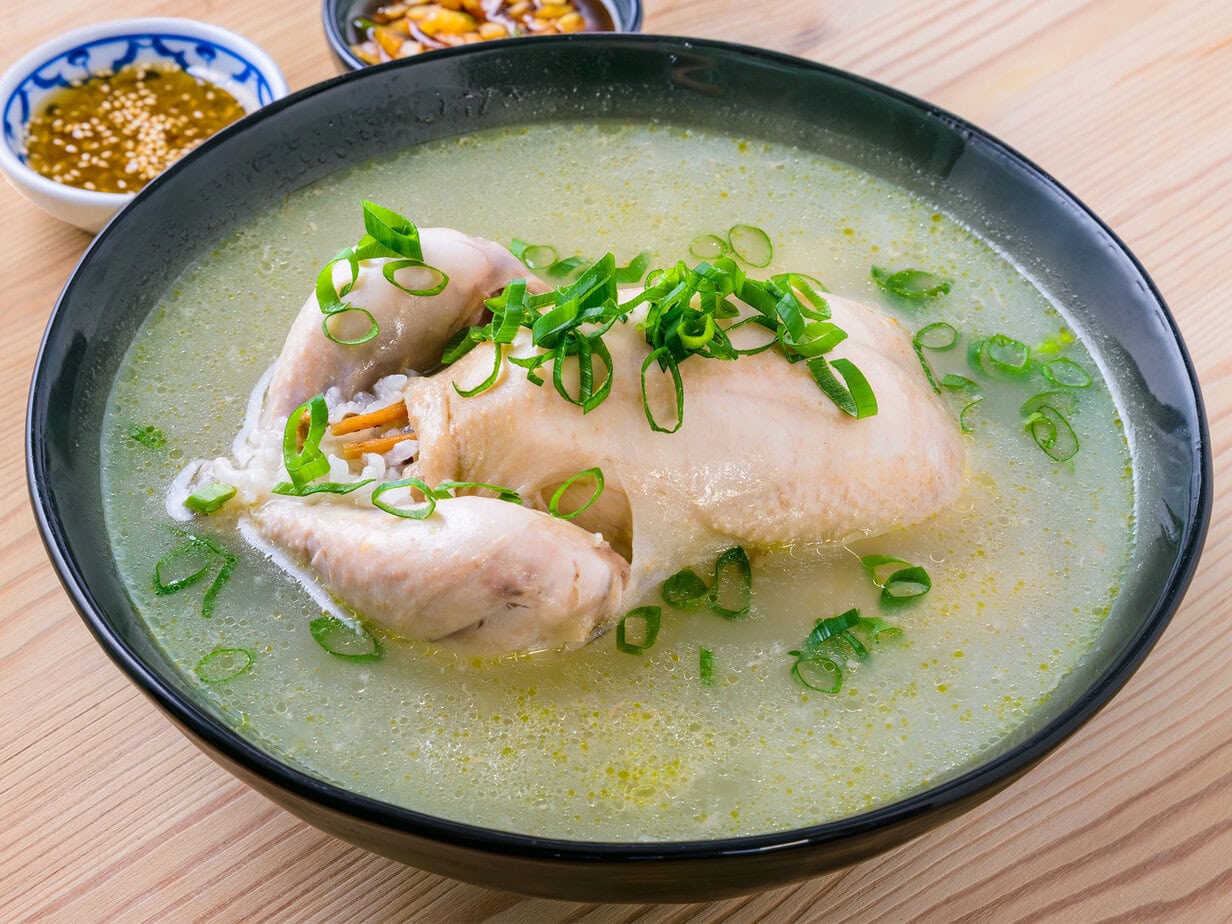
Authentic Samgyetang – Ginseng Chicken Soup
Ingredients
- 1 Small chicken
- 3 Ginseng roots Fresh or dried
- 10 cloves garlic Peeled
- 6 Jujubes
- 100 g glutinous rice Short-grain (use Vietnamese sticky rice, not Thai), uncooked
- 2 stems Green onion thinly sliced
- 1.5 liter of water Or enough to cover the chicken
Sesame dipping sauce
- 1 tablespoon salt
- 1 pinch black pepper
- 1 teaspoon of sesame seeds crushed
- 2 tablespoons of sesame oil toasted
Sweet and sour dipping sauce
- 3 tablespoons light soy sauce
- 2 tablespoons rice vinegar
- 1 teaspoon of honey
- 0.5 onion In small pieces
- 1 green chili pepper In small pieces
Banchan to accompany (optional)
- Mung bean sprout salad
- Korean sesame spinach
- Kimchi
Instructions
- Rinse the rice several times, then soak it in cold water for 1 hour.100 g glutinous rice
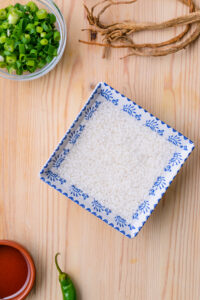
- Thoroughly clean the chicken and vegetables. Rub the chicken with salt, then rinse (optional).1 Small chicken
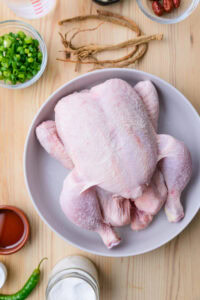
- Stuff the chicken with rice, garlic cloves, jujubes, and ginseng roots. If there’s too much rice, put the excess in the pot3 Ginseng roots, 10 cloves garlic, 6 Jujubes
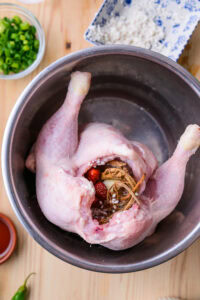
- Tie the chicken legs together
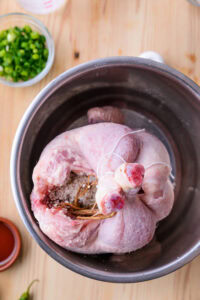
- Place the chicken in a suitable pot and cover it almost completely with water.1.5 liter of water
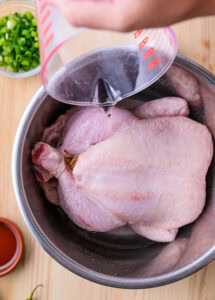
- Bring the water to a boil and cook over medium heat for 30 minutes.
- Reduce to low heat, cover and simmer for another 30 minutes.
- Mix the sesame dipping sauce ingredients in a small container.1 tablespoon salt, 1 pinch black pepper, 1 teaspoon of sesame seeds, 2 tablespoons of sesame oil
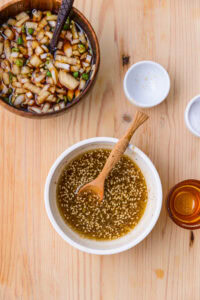
- Mix the sweet and sour dipping sauce ingredients in a small container.3 tablespoons light soy sauce, 2 tablespoons rice vinegar, 1 teaspoon of honey, 0.5 onion, 1 green chili pepper
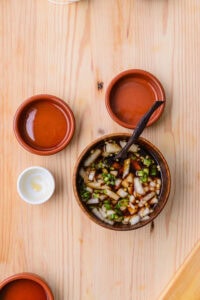
- Serve in clay pots if you have them, garnish with green onion and accompany with banchan of your choice.2 stems Green onion
- To enjoy alone or with family, place the chicken in its broth in the center, serve the broth in individual bowls and cut pieces of chicken to give to guests. Dip these pieces in the dipping sauces, and enjoy with the banchan
Notes
Nutrition
Culinary sources
For the dipping sauces, I used those from the blog Maangchi
